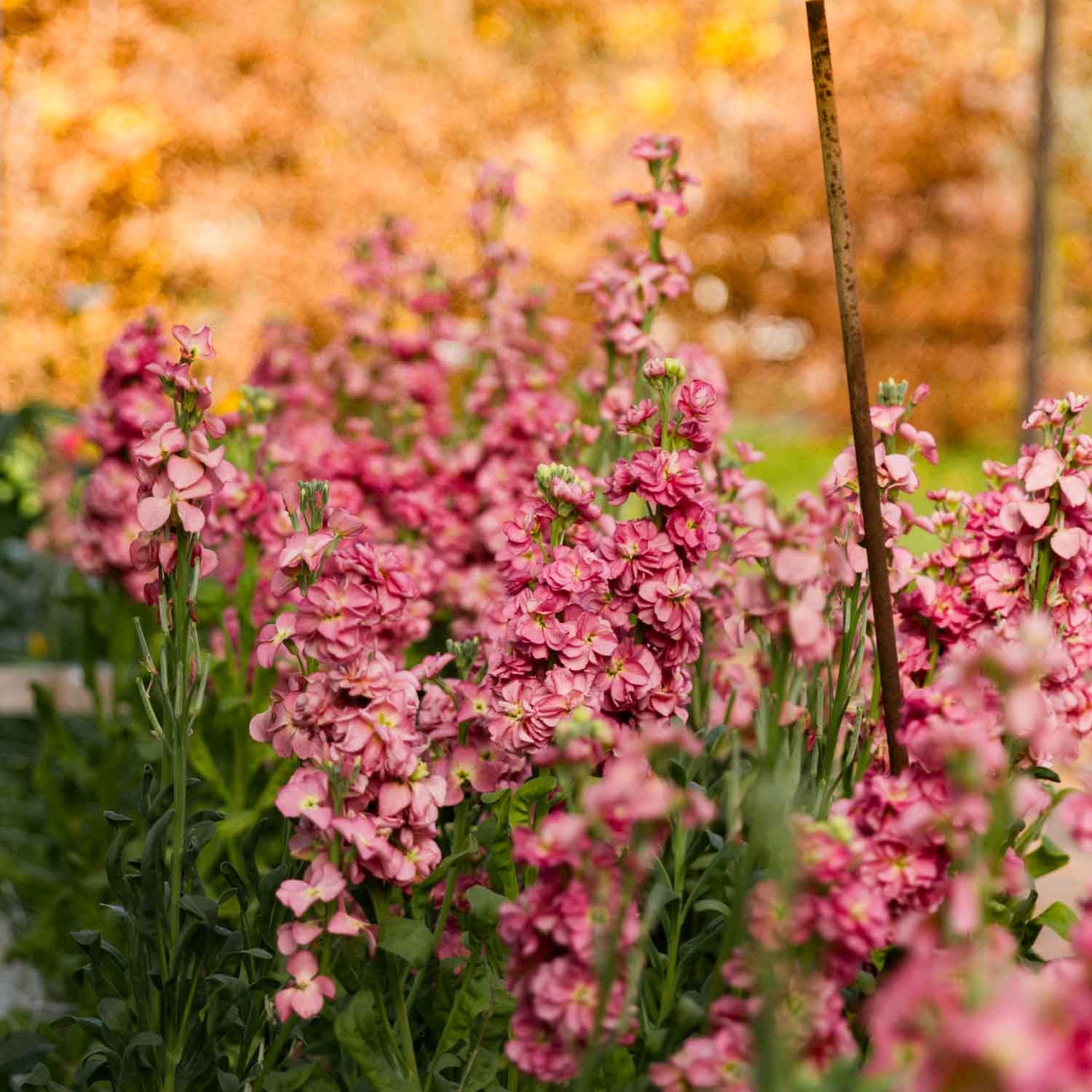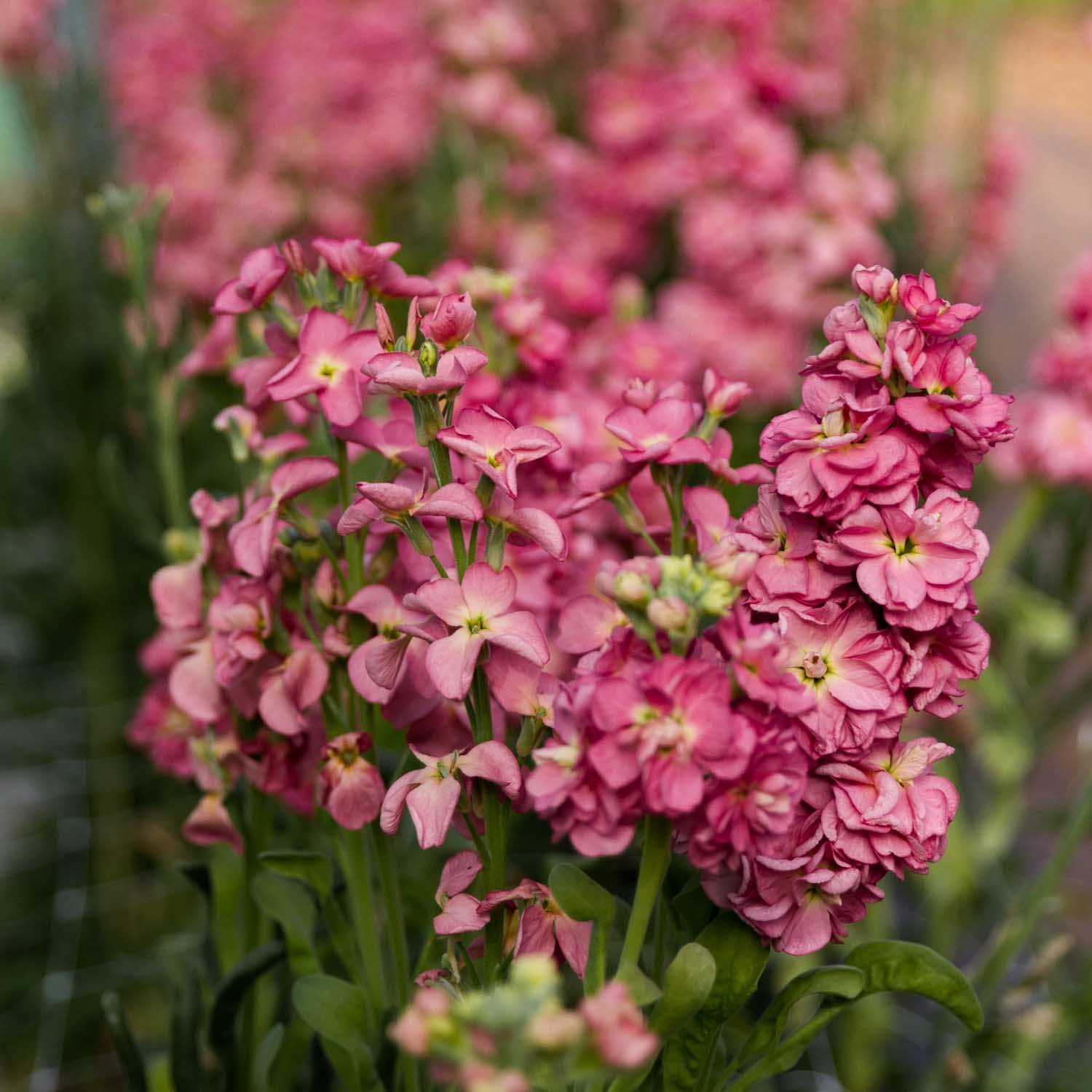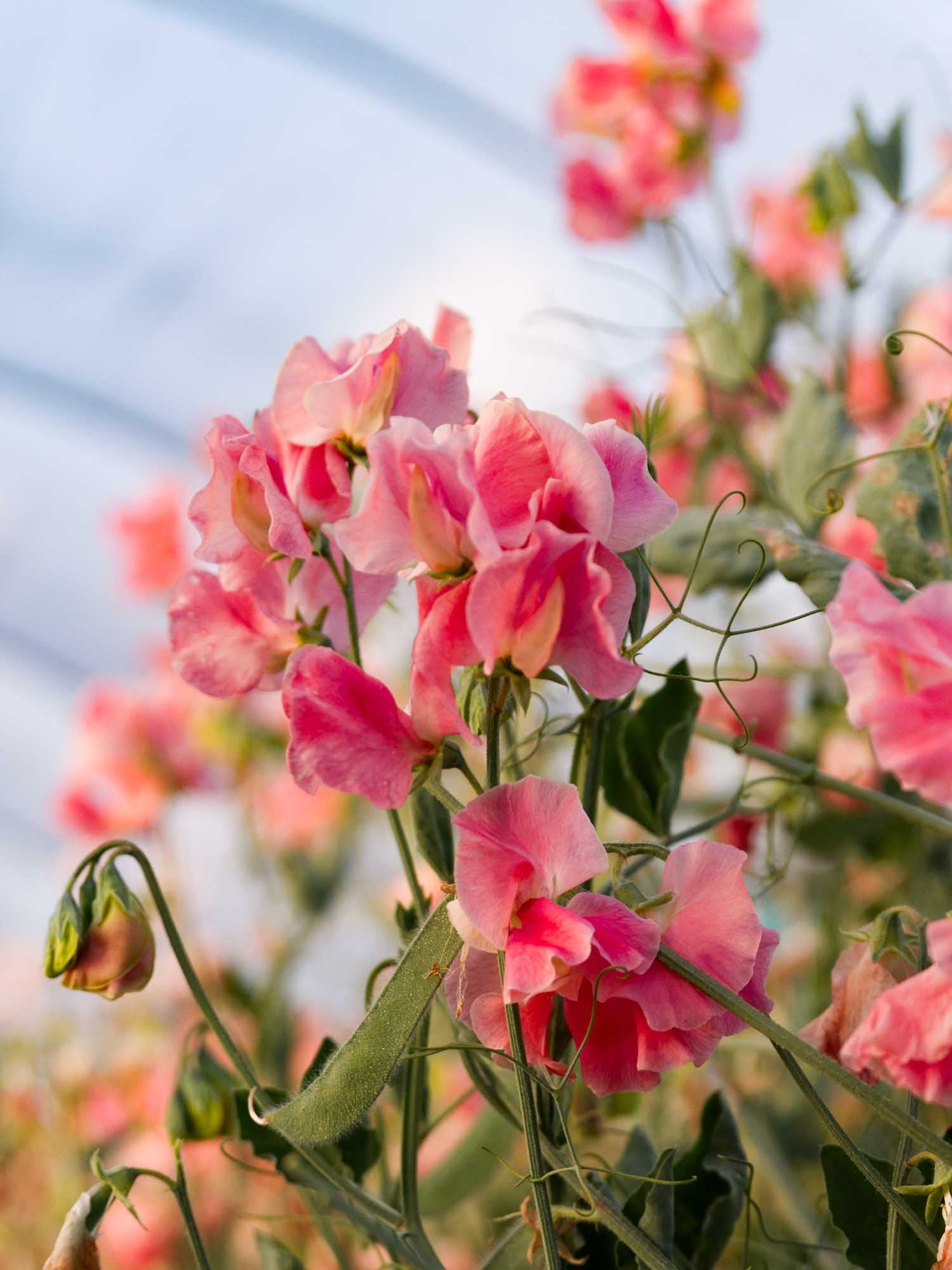


Stock - StoX Antique Rose
Seeds
MATTHIOLA INCANA
My new favourite coloured stock! Similar to Vintage Brown but lighter with a peach undertone that just blend and go with everything soo perfectly!
A 50/50 mix between doubles and singles.
The StoX series of stock seem to be champions of the warmer wing seasons of stock (late spring, autumn flowering), handling the warmer temps and underwatering much better than the Katz series!
APPROX 25 SEEDS
*Please respect the breeders hard work & wishes, and do not propagate or save seeds from this variety.
Choose options



When to Sow:
Autumn to Early Spring
How to Sow:
Transplant
Light & Cover Requirements:
COVER (with vermiculite)
Ideal Temperature:
Medium (approx 21°C)
Germination Speed:
Normal (7–14 days)
Plant Type:
Hardy Annual
Ideal Location:
Full Sun / Partial Shade
Spacing:
10–15cm
Height:
60cm+

